By: Dominick L. Flarey, Ph.D., RN-BC, ANP-BC
Certified Bioenergetics Coachele
President & Chief Consultant
BioEnergy Health Consultants, LLC
Explore strategies to shield against EMF exposure, debunk myths, and embrace safer tech for health in this academic guide.
 In our increasingly connected world, electromagnetic fields (EMFs) are ubiquitous, emanating from numerous devices and technologies that we use daily. Understanding how to protect ourselves from the potential harmful effects of EMFs is crucial for maintaining our health and well-being. This article delves into the nature of EMFs, the health risks associated with exposure, and practical strategies for minimizing these risks without succumbing to ineffective protection products.
In our increasingly connected world, electromagnetic fields (EMFs) are ubiquitous, emanating from numerous devices and technologies that we use daily. Understanding how to protect ourselves from the potential harmful effects of EMFs is crucial for maintaining our health and well-being. This article delves into the nature of EMFs, the health risks associated with exposure, and practical strategies for minimizing these risks without succumbing to ineffective protection products.
Key Takeaways
- EMF exposure is widespread due to common devices such as cell phones, Wi-Fi networks, and smart meters, and understanding the difference between ionizing and non-ionizing radiation is essential for assessing health risks.
- Many EMF protection products may not be scientifically proven to work and could inadvertently increase exposure; it’s more effective to manage distance from EMF sources and adopt safer technology use.
- Creating low-EMF environments and incorporating nature into daily routines can help mitigate the effects of EMF exposure, promoting better health and relaxation.
- Lifestyle adjustments such as diet, mindfulness, and physical activity can support the body’s resilience against EMF stress, while ongoing research continues to explore the long-term health implications.
- Personal empowerment through education, community support, and advocacy for safer EMF standards is vital for addressing the challenges posed by EMFs in our environment.
Understanding Electromagnetic Fields and Their Sources
The Spectrum of Electromagnetic Energy
Electromagnetic fields (EMFs) are characterized by their spectral properties, which include wavelength, frequency, and photon energy. Wavelength is the spatial distance between successive points of the same phase in the wave, and it is inversely proportional to frequency—the number of times the electric and magnetic fields oscillate per second. Photon energy, on the other hand, represents the energy carried by a single photon.
The spectrum of electromagnetic energy spans a wide range, from long wavelengths with low frequencies to short wavelengths with high frequencies. This spectrum is divided into various regions, each with distinct properties and effects:
- Radio waves
- Microwaves
- Infrared
- Visible light
- Ultraviolet
- X-rays
- Gamma rays
The level of EMFs from artificial sources can significantly exceed natural background levels, particularly in areas of intensive use. It is crucial to understand the spectrum to assess the potential health risks associated with different types of EMF exposure.
Natural sources of EMFs include the Earth’s own electric and magnetic fields and solar radiation. However, in daily life, individuals are more frequently exposed to radio frequency fields from artificial sources such as mobile phones, wireless routers, and microwave ovens.
Common Sources of EMF in Daily Life
Electromagnetic fields (EMFs) are pervasive in modern society, emanating from a multitude of devices and technologies that are integral to daily life. The ubiquity of EMFs is underscored by their presence in common household and personal devices, such as microwave ovens, computers, and cell phones, as well as infrastructure like power lines and wireless networks.
The following list encapsulates the primary sources of EMF that individuals are likely to encounter on a routine basis:
- Microwave ovens
- Computers
- Smart meters
- Wi-Fi networks
- Cell phones
- Bluetooth devices
- Power lines
- Medical imaging devices (e.g., MRIs)
While the existence of EMFs is a byproduct of necessary and beneficial technologies, concerns have been raised regarding their potential health implications, including the exploration of links between electromagnetic fields and depression. It is important to approach such concerns with a critical eye, examining the weight of scientific evidence and the context of exposure.
The conversation around EMFs is not limited to their sources but extends to their potential impact on well-being. As society continues to grapple with the implications of our technologically saturated environment, it becomes increasingly crucial to discern the factual basis of health-related claims.
Ionizing vs. Non-Ionizing Radiation
Electromagnetic fields (EMFs) are categorized into two distinct types: ionizing and non-ionizing radiation. Ionizing radiation is characterized by its high energy levels, which are sufficient to ionize atoms and molecules, potentially causing cellular and DNA damage. This type of radiation includes X-rays and gamma rays, commonly associated with nuclear plants and medical imaging technologies.
In contrast, non-ionizing radiation lacks the energy to remove tightly bound electrons from atoms and does not typically lead to molecular ionization. It encompasses a range of frequencies including extremely low frequency (ELF), radio frequency (RF), microwaves, and visible light. Sources of non-ionizing radiation are prevalent in daily life, from household appliances to wireless communication devices.
EMFs pose risks to human health, wildlife, and ecosystems. Chronic exposure can lead to adverse effects, challenging current safety standards. Research and regulation need a nuanced approach.
While non-ionizing radiation is generally perceived as harmless, the potential for adverse biological effects, particularly with chronic exposure, necessitates a more nuanced understanding and approach to regulation and safety standards. The following table summarizes the key differences between ionizing and non-ionizing radiation:
| Radiation Type | Energy Level | Potential for Cellular Damage | Common Sources |
|---|---|---|---|
| Ionizing | High | Yes | Nuclear plants, medical imaging |
| Non-ionizing | Low to Mid | No (typically) | Household appliances, wireless devices |
Assessing the Health Risks Associated with EMF Exposure
Epidemiological Evidence on EMF and Health Outcomes
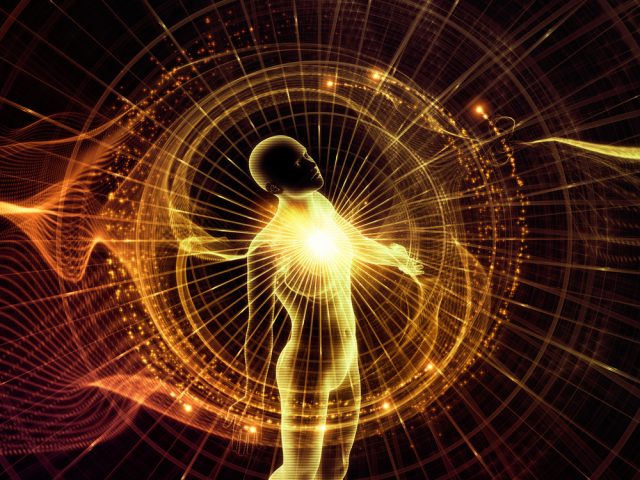 The investigation into the health effects of electromagnetic fields (EMF) has been a subject of scientific inquiry for decades. Initial research primarily addressed extremely low frequency exposures from power lines and electrical appliances. These studies suggested a weak association between EMF exposure and an increased risk of childhood leukemia, but no conclusive evidence linked EMF exposure to adult cancers, including leukemia and brain tumors.
The investigation into the health effects of electromagnetic fields (EMF) has been a subject of scientific inquiry for decades. Initial research primarily addressed extremely low frequency exposures from power lines and electrical appliances. These studies suggested a weak association between EMF exposure and an increased risk of childhood leukemia, but no conclusive evidence linked EMF exposure to adult cancers, including leukemia and brain tumors.
Further epidemiological research is necessary to clarify the potential health impacts of EMF, especially given the proliferation of devices emitting EMF, such as cellular phones and wireless routers. The National Institute for Environmental Health Sciences (NIEHS) emphasizes the need for more comprehensive studies to ascertain whether EMFs pose a significant risk to human health.
While some studies have indicated a possible correlation between EMF exposure and health outcomes, the evidence remains inconclusive, necessitating ongoing research to establish any definitive links.
The table below summarizes key findings from various studies on EMF exposure and health risks:
| Study Focus | Findings | Risk Level |
|---|---|---|
| Childhood Leukemia | Weak association with EMF field strength | Low to Moderate |
| Adult Cancers | No evidence of a link | Low |
| General EMF Exposure | Inconclusive evidence, more research needed | Unknown |
Potential Biological Mechanisms of EMF Harm
The discourse on the potential biological mechanisms by which electromagnetic fields (EMFs) may exert harm on living organisms is both complex and evolving. EMFs, particularly those emanating from ubiquitous devices such as cell phones and microwaves, have been scrutinized for their biological interactions. These interactions are thought to induce oscillations in the body’s electrical charges, leading to the creation of additional internal electric and magnetic fields, which in turn may increase cellular resistance and disrupt ionic conductivity. This disruption could impede the movement of nutrients into cells and the removal of metabolic products, potentially leading to adverse health effects.
The psychological effects of electromagnetic fields are also a subject of concern, with some studies suggesting a link between EMFs and anxiety disorders, although the evidence remains inconclusive.
The following list outlines the systems and organs that research has identified as potentially vulnerable to EMF exposure:
- Hematopoietic system
- Central nervous system
- Cardiovascular system
- Reproductive system
- Brain
- Neuroendocrine system
- Immunity and metabolic processes
Further investigation into the biological mechanisms of EMF harm is essential to understand the full spectrum of health risks associated with EMF exposure. This understanding is critical for developing effective strategies to mitigate these risks and protect public health.
Vulnerable Populations: Children and the Elderly
Research indicates that certain populations, such as children and the elderly, may be more susceptible to the effects of electromagnetic fields (EMFs). Children’s developing systems and the elderly’s declining biological functions make them particularly vulnerable to EMF exposure. The hematopoietic, central nervous, cardiovascular, reproductive, neuroendocrine systems, and brain are among the most affected organs and systems.
While regulatory frameworks are in place, there is a growing consensus that they need to evolve to offer better protection against the potential risks associated with chronic EMF exposure.
The following list highlights the systems and organs identified by researchers as most vulnerable to EMF:
- Hematopoietic system
- Central nervous system
- Cardiovascular system
- Reproductive system
- Brain
- Neuroendocrine system
- Immunity and metabolic processes
It is imperative to consider these vulnerabilities when assessing the health risks of EMF exposure and to tailor protective measures accordingly.
Debunking Myths: The Efficacy of EMF Protection Products
Analyzing Claims of EMF-Blocking Devices
In the realm of electromagnetic field (EMF) protection, a plethora of devices claim to shield individuals from the potential harms of EMF radiation. These products, ranging from magnets to specialized fabrics, are marketed with the promise of reducing exposure to EMF. However, the effectiveness of these devices is a subject of considerable debate among experts.
The Federal Trade Commission (FTC) has taken action against companies that have made unsubstantiated claims about the protective capabilities of their products. Investigations reveal that some EMF-blocking devices may even interfere with the normal operation of electronic devices, potentially leading to increased EMF emissions as these devices struggle to maintain connectivity.
- EMF Shield Magnets: Claim to reduce EMF exposure but lack scientific validation.
- Anti-Radiation Shields: Marketed as reducing radiation from phones, yet may disrupt signal and increase radiation.
- Specialized Fabrics: Advertised to block EMF, but effectiveness varies and is often unproven.
It is essential for consumers to approach EMF protection devices with a critical eye and seek evidence-based information before making purchasing decisions.
The scrutiny of EMF protection claims is not just a matter of consumer protection but also of public health interest. As such, it is imperative that claims made by manufacturers are supported by rigorous scientific testing and not merely anecdotal evidence or marketing hyperbole.
Scientific Scrutiny of Anti-Radiation Garments and Accessories
The market is replete with products claiming to offer protection from electromagnetic fields (EMF), including garments and accessories purported to block or mitigate exposure. However, scientific scrutiny reveals that many of these products do not perform as advertised, and some may inadvertently increase EMF exposure. The Federal Trade Commission (FTC) has taken action against companies that have made unsubstantiated claims about the efficacy of their EMF protection products.
It is essential to approach EMF protection products with a critical eye, considering the lack of reliable evidence supporting their effectiveness.
A closer examination of these products often shows a discrepancy between the marketing claims and their actual performance. For instance, anti-radiation phone cases may disrupt the device’s signal, potentially leading to increased radiation output as the phone attempts to compensate for the poor signal. The following points summarize key findings from scientific evaluations of EMF protection products:
- Low-powered magnets and similar devices are generally ineffective against EMF radiation.
- Anti-radiation “shields” can cause electronic devices to emit more radiation.
- Distance from EMF sources remains the most reliable method for reducing exposure.
Consumers are advised to prioritize proven methods of EMF reduction, such as maintaining distance from sources, over unverified protective devices.
Understanding the Placebo Effect in EMF Protection
The placebo effect in EMF protection refers to the psychological benefit derived from the belief in the efficacy of a product or practice, despite the lack of scientific evidence supporting its protective capabilities. The power of belief can significantly influence an individual’s perception of health and well-being, often leading to reported improvements in symptoms without any physiological changes.
- The Federal Trade Commission (FTC) has taken action against companies making unsubstantiated claims about EMF protection.
- Scientific consensus indicates that many EMF protection gadgets, such as low-powered magnets, do not provide reliable defense against EMF radiation.
- Products that claim to shield against EMF may disrupt device signals, potentially increasing radiation emission as devices search for service.
It is essential to approach EMF protection products with a critical eye and to understand that the perceived benefits may be a result of the placebo effect rather than a physical reduction in EMF exposure.
While the placebo effect can be a powerful psychological phenomenon, it is crucial to distinguish between subjective feelings of safety and objective measures of EMF mitigation. Consumers are advised to seek evidence-based strategies for EMF protection and to be wary of products that offer protection without scientific validation.
Practical Strategies for Minimizing EMF Exposure
Distance as a Key Factor in Exposure Reduction
The inverse-square law is fundamental in understanding the relationship between distance and exposure to electromagnetic fields (EMFs). As distance from an EMF source increases, the intensity of exposure decreases exponentially. This principle suggests that even small increases in distance from sources of EMF can result in significant reductions in exposure levels.
For instance, moving away from a wireless router or a smart meter can dramatically decrease the power density of electromagnetic radiation one is subjected to. It is important to consider the reference distance from the source when evaluating EMF exposure. Measurements taken at a standard distance, such as one yard (0.91 meters), can provide a baseline for assessing the safety of EMF emissions in relation to regulatory standards.
While emissions from devices like smart meters are often well below the maximum permissible exposure (MPE) standards, the actual exposure over time, especially from devices that emit intermittent bursts of energy, is typically much lower than continuous transmission sources.
Given the potential for EMF to have significant biological effects, it is prudent to maximize distance from EMF sources whenever possible. This approach aligns with the precautionary principle, especially in light of concerns that current regulatory standards may not adequately address chronic low-level exposures.
Safe Use of Wireless Devices and Appliances
 In the digital era, the ubiquity of wireless devices and appliances necessitates a conscientious approach to their use. Minimizing exposure to electromagnetic fields (EMF) from these devices is crucial for health safety. Practical measures can be taken to reduce the impact of EMF radiation without compromising the benefits of technology.
In the digital era, the ubiquity of wireless devices and appliances necessitates a conscientious approach to their use. Minimizing exposure to electromagnetic fields (EMF) from these devices is crucial for health safety. Practical measures can be taken to reduce the impact of EMF radiation without compromising the benefits of technology.
- Maintain a safe distance from wireless routers and avoid placing them in bedrooms or common areas where people spend a significant amount of time.
- Use wired connections whenever possible, such as Ethernet cables for internet access and wired headphones instead of Bluetooth headsets.
- Limit the use of devices that emit high levels of EMF, especially before bedtime, to reduce interference with sleep patterns and overall well-being.
It is imperative to recognize that while wireless technology provides convenience, it also poses potential health risks. Adopting safer usage habits can mitigate these risks and promote a healthier environment.
Furthermore, the implementation of device-free zones within living spaces can contribute to a reduction in cumulative EMF exposure. Educating oneself about the specific EMF emission levels of various devices enables informed decision-making regarding their purchase and use.
Creating Low-EMF Environments at Home and Work
The creation of low-EMF environments in residential and occupational settings is a critical step in mitigating the potential risks associated with electromagnetic field (EMF) exposure. Strategies for reducing EMF exposure are multifaceted, encompassing both behavioral changes and the use of technology designed to minimize emissions.
- Identify and minimize the use of EMF-generating devices.
- Increase distance from EMF sources, as exposure decreases with distance.
- Utilize wired connections instead of wireless where feasible.
- Implement EMF shielding solutions for high-exposure areas.
- Regularly inspect and maintain electrical wiring to prevent leaks of EMF.
It is imperative to recognize that while complete elimination of EMF exposure is impractical, significant reductions can be achieved through thoughtful modifications to living and working spaces. These adjustments not only contribute to a decrease in EMF exposure but also promote a general awareness of the electromagnetic environment.
The implementation of these strategies requires a nuanced understanding of the sources and behaviors of EMF within different environments. For instance, the placement of furniture and electronic devices can be optimized to create zones with lower EMF levels. Additionally, the adoption of building materials and design principles that attenuate EMF can further contribute to the creation of low-EMF spaces.
Technological Solutions and Safer Alternatives
Advancements in Low-EMF Electronics
In the realm of electronics, significant strides have been made to reduce the electromagnetic field (EMF) emissions from devices that are integral to modern life. The development of low-EMF computers and other electronics represents a pivotal step in mitigating potential health risks. Manufacturers are increasingly recognizing the importance of minimizing EMF exposure, leading to the innovation of electronics designed to emit less electromagnetic energy.
The design and engineering of low-EMF electronics involve the careful consideration of component placement, shielding materials, and circuitry layout to achieve reduced emissions. This approach not only benefits the end-users by decreasing their EMF exposure but also aligns with a broader commitment to public health.
The following list highlights key areas where advancements have been made:
- Improved shielding techniques in computer monitors and cases
- Enhanced circuit design to minimize EMF radiation in computing devices
- Adoption of wired peripherals over wireless to reduce EMF spread
- Development of low-EMF power supply units for electronic devices
These technological solutions are a testament to the industry’s response to consumer concerns about EMFs. As research continues to explore the long-term effects of EMF exposure, the evolution of low-EMF electronics remains a critical aspect of safeguarding public health.
Identifying and Utilizing Safer Communication Technologies
In the quest to mitigate the potential risks associated with electromagnetic fields (EMFs), identifying and utilizing safer communication technologies is paramount. The adoption of devices and practices that minimize EMF exposure is essential for public health.
One approach is to prioritize wired connections over wireless ones, as they typically emit lower levels of EMF. For instance, opting for a wired Ethernet connection can significantly reduce exposure compared to Wi-Fi. Additionally, the use of speakerphone or air tube headsets instead of holding a cell phone directly to the ear can decrease the intensity of exposure to the head and brain.
It is also advisable to be cognizant of device certifications and regulatory standards, such as those set by the FCC and ICNIRP, which aim to limit EMF emissions to safe levels.
Moreover, public awareness campaigns and educational resources play a crucial role in informing consumers about the potential risks and safer alternatives. These efforts can empower individuals to make informed decisions about the technology they use daily.
Regulatory Standards and Consumer Guidance
In the realm of electromagnetic field (EMF) regulation, a myriad of standards and guidelines have been established to safeguard public health. Regulatory bodies such as the Federal Communications Commission (FCC) and the International Commission on Non-Ionizing Radiation Protection (ICNIRP) have set forth exposure limits based on current scientific understanding. These limits are designed to prevent adverse health effects associated with EMF exposure.
Consumer guidance in this context is pivotal, as it empowers individuals to make informed decisions about their EMF exposure. It often includes fine print warnings on product packaging and detailed instructions for safe use.
The following list outlines key regulatory and consumer guidance initiatives:
- The Cell Phone Right to Know Act
- New Hampshire Commission recommendations
- San Francisco and Berkeley ordinances
- Reports from the US Government, including the Center for Disease Control and Prevention (CDC) and the Environmental Protection Agency (EPA)
- The 1996 Telecom Act provisions
- International actions such as the Precautionary Policy on Cell Phone Radiation
These regulations and guidelines are subject to ongoing review and updates as new scientific evidence emerges. It is crucial for consumers to stay abreast of these changes to ensure they are following the most current recommendations for EMF safety.
The Role of Natural Environments in Mitigating EMF Effects
Earthing and Grounding Practices
 The concept of earthing, also known as grounding, involves connecting the human body directly to the Earth’s surface, exploiting the planet’s natural potential to neutralize free radicals and reduce electromagnetic interference. The practice is premised on the Earth’s inherent electrical properties, which are believed to promote physiological balance and well-being.
The concept of earthing, also known as grounding, involves connecting the human body directly to the Earth’s surface, exploiting the planet’s natural potential to neutralize free radicals and reduce electromagnetic interference. The practice is premised on the Earth’s inherent electrical properties, which are believed to promote physiological balance and well-being.
Earthing practices suggest that direct contact with the Earth, such as walking barefoot or utilizing conductive systems that link the body to the Earth, can facilitate this exchange of electrons.
A variety of commercial products have emerged to facilitate earthing, including specialized bed sheets, mats, and even footwear. These items are designed to connect users to the Earth’s surface or to a grounding wire in the home, aiming to replicate the benefits of natural grounding:
- Earthing bed sheets
- Pillow covers
- Desk mats
- Chair mats
- Patches
- Earthing shoes
While the efficacy of these products is a subject of debate, proponents argue that regular earthing can lead to improved sleep, reduced stress, and a general enhancement of well-being. Critics, however, call for more rigorous scientific validation of these claims. The practice of earthing, therefore, remains an intriguing area within the broader discussion on electromagnetic field (EMF) mitigation strategies.
The Protective Effects of the Earth’s Natural EMF
The Earth’s natural electromagnetic fields (EMFs) play a crucial role in maintaining ecological balance and may offer inherent protective effects against the proliferation of artificial EMFs. The geomagnetic field, for instance, serves as a shield against cosmic radiation and solar winds, which are forms of high-energy particles that could be harmful to life on Earth.
Research suggests that exposure to the Earth’s natural EMFs can have a stabilizing effect on the body’s biological processes. This phenomenon, often referred to as ‘grounding’ or ‘earthing,’ involves direct contact with the Earth’s surface, allowing for the exchange of ions and the absorption of natural electromagnetic energy.
The concept of grounding emphasizes the potential therapeutic benefits of reconnecting with the Earth’s natural EMF, which may help in neutralizing the negative impact of artificial EMFs.
While the protective effects of the Earth’s natural EMF are a subject of ongoing investigation, the following list outlines some of the proposed benefits:
- Enhancement of circadian rhythms and sleep quality
- Reduction in inflammation and pain
- Improvement in immune response
- Decrease in stress and cortisol levels
- Betterment of overall well-being and energy levels
These benefits, while not yet fully understood, suggest a symbiotic relationship between humans and the Earth’s natural EMF, which may be harnessed to mitigate the effects of artificial EMF exposure.
Incorporating Nature into Daily Routines for EMF Relief
The integration of natural environments into daily life is posited as a counterbalance to the omnipresence of electromagnetic fields (EMFs). Exposure to the Earth’s inherent electromagnetic properties may offer a respite from the artificial EMFs generated by modern technology. The concept of ‘grounding’ or ‘earthing’ involves direct contact with the Earth’s surface, which is believed to facilitate the transfer of negative ions and promote physiological equilibrium.
- Engage in outdoor activities such as walking barefoot on grass or sand.
- Allocate time for outdoor breaks during work hours to connect with natural surroundings.
- Incorporate indoor plants that can contribute to a healthier living space.
The therapeutic potential of natural settings is not merely anecdotal; it is grounded in the biophilia hypothesis, which suggests an innate human affinity for life and lifelike processes. The hypothesis posits that natural environments can have restorative effects on human health, potentially mitigating the stress induced by chronic EMF exposure.
While the empirical validation of these practices is an ongoing endeavor, the anecdotal evidence supporting the benefits of integrating nature into daily routines is substantial. Individuals seeking to diminish the impact of EMFs may consider these practices as part of a holistic approach to well-being.
Lifestyle Adjustments for EMF Harm Reduction
Dietary Considerations and Nutritional Support
In the context of mitigating the harmful effects of electromagnetic fields (EMFs), dietary considerations and nutritional support play a pivotal role. Adequate nutrition can bolster the body’s resilience against potential EMF-induced stressors. Nutrients such as antioxidants, vitamins, and minerals are essential in supporting the body’s defense mechanisms.
- Antioxidants help combat oxidative stress, which may be exacerbated by EMF exposure.
- Vitamins such as B-complex, C, and E are known for their protective roles against cellular damage.
- Minerals like magnesium and zinc contribute to maintaining the integrity of biological systems.
It is imperative to maintain a balanced diet rich in these nutrients to enhance the body’s natural ability to cope with environmental stressors, including EMFs.
While the scientific community continues to explore the relationship between EMF exposure and health outcomes, incorporating a nutrient-dense diet is a proactive approach to safeguarding one’s well-being. This strategy is particularly relevant for vulnerable populations, such as children and the elderly, who may be more susceptible to the effects of EMFs.
Stress Management and Mindfulness Techniques
In the context of electromagnetic field (EMF) challenges, stress management and mindfulness techniques emerge as pivotal for maintaining psychological and physiological well-being. Mindful stretching and body scans are recommended practices that integrate the body and mind, providing a grounding effect that can counterbalance the stressors associated with EMF exposure. These techniques can be performed in various postures and require only a few minutes, making them accessible and adaptable to individual routines.
The 54321 method is another mindfulness technique that emphasizes sensory grounding. It involves acknowledging various elements in one’s immediate environment, such as:
- 5 things you can see
- 4 things you can touch
- 3 things you can hear
- 2 things you can smell
- 1 thing you can taste
This method not only fosters present-moment awareness but also diverts attention from EMF-related concerns, thereby reducing stress levels.
It is essential to recognize that while technology permeates daily life, its effects on the body and brain can contribute to stress. Mindfulness practices offer a means to navigate these effects, promoting relaxation and mental clarity amidst the ubiquity of EMF sources.
Ultimately, the goal is not to alter one’s perception of EMF but to cultivate peace of mind through feasible and practical solutions. Whether it is a minor annoyance or a persistent concern, stress can significantly impact health, and mindfulness techniques serve as a valuable tool in mitigating these effects.
Physical Activity and Its Role in Counteracting EMF Stress
 The relationship between physical activity and the mitigation of electromagnetic field (EMF) stress is an area of increasing interest. Regular physical activity has been shown to enhance the body’s resilience to various stressors, including EMF exposure. It is hypothesized that exercise may help in maintaining the integrity of cellular processes that could be disrupted by EMF.
The relationship between physical activity and the mitigation of electromagnetic field (EMF) stress is an area of increasing interest. Regular physical activity has been shown to enhance the body’s resilience to various stressors, including EMF exposure. It is hypothesized that exercise may help in maintaining the integrity of cellular processes that could be disrupted by EMF.
Physical activity stimulates physiological systems that are essential for maintaining homeostasis, potentially counteracting the disturbances caused by EMF exposure.
While the exact mechanisms remain to be fully elucidated, it is clear that engaging in regular physical activity is beneficial for overall health and may provide a protective effect against the stress induced by EMF. The following list outlines some of the proposed benefits of physical activity in relation to EMF stress:
- Improvement in cardiovascular health, enhancing blood flow and nutrient delivery to tissues.
- Strengthening of the musculoskeletal system, which may help in grounding the body’s electrical charges.
- Enhancement of metabolic functions, potentially reducing the impact of EMF on cellular ionic conductivity.
- Stimulation of the endocrine system, which could help in modulating stress responses.
Further research is necessary to fully understand the role of physical activity in EMF harm reduction. However, the current evidence suggests that incorporating regular exercise into one’s lifestyle could be a prudent approach to mitigating the potential adverse effects of EMF exposure.
Emerging Research on EMF and Long-Term Health
Ongoing Studies on EMF and Chronic Diseases
Recent research endeavors continue to investigate the potential connections between electromagnetic fields and chronic disease. The focus has shifted from the low-frequency exposures of the past to the high-frequency fields generated by modern wireless technologies. Bold claims of causality remain scientifically unsubstantiated, but the pursuit of knowledge in this area is relentless.
- Top recent studies include:
- The impact of 5G and 4G wireless technologies
- Wi-Fi exposure
- National Toxicology Program study
- Ramazzini Study
- Co-Carcinogenic and Synergistic Effects of EMF
The exploration of electromagnetic sensitivity and its implications for public health is a critical aspect of ongoing research.
The organs and systems identified as potentially vulnerable to EMF include the hematopoietic, central nervous, cardiovascular, reproductive, and neuroendocrine systems, as well as brain function, immunity, and metabolic processes. These findings underscore the importance of a multidisciplinary approach to understanding the full spectrum of EMF’s biological effects.
The Future of EMF Research: Trends and Directions
As the deployment of the 5G network continues to expand, the future of electromagnetic field (EMF) research is poised to delve deeper into understanding its implications on health and the environment. The advent of 5G technology has catalyzed a new wave of studies, focusing on the potential biological effects of higher frequency EMFs that this technology employs.
The research community is actively exploring the nuances of EMF exposure from 5G networks, with particular attention to long-term health outcomes. This includes the investigation of non-thermal effects, which are not directly caused by the heating of tissues but may involve more subtle biological changes. The following points highlight key areas of interest:
- The characterization of exposure in real-world scenarios as opposed to controlled laboratory settings.
- The identification of biological markers of EMF exposure and potential health effects.
- The assessment of cumulative exposure from multiple sources, including 5G, and its health implications.
The integration of interdisciplinary approaches, combining expertise from fields such as epidemiology, biology, and engineering, is essential for a comprehensive understanding of EMF effects.
With the increasing prevalence of wireless technology, it is crucial to maintain a rigorous scientific inquiry into the safety standards and regulatory policies that govern EMF exposure. This will ensure that public health considerations remain at the forefront of technological advancements.
Implications for Public Health Policy
The ongoing research into the long-term health effects of electromagnetic fields (EMF) has significant implications for public health policy. Policy frameworks must evolve to reflect the growing understanding of EMF risks and the need for protective measures. Regulatory bodies are tasked with the challenge of balancing technological advancement with the safeguarding of public health.
- Development of exposure guidelines that are responsive to the latest scientific findings.
- Implementation of public awareness campaigns to educate on safe EMF practices.
- Encouragement of industry standards that prioritize reduced EMF emissions.
The precautionary principle suggests that in the absence of scientific consensus, the development of policies to protect vulnerable populations should be prioritized. This approach advocates for proactive measures to mitigate potential risks associated with EMF exposure.
The integration of EMF considerations into urban planning, the promotion of research into low-EMF technologies, and the establishment of clear labeling of EMF emissions from consumer products are further steps that can be taken. These measures would empower consumers to make informed decisions and contribute to a broader societal effort to minimize EMF exposure.
Educational Resources and Advocacy for EMF Awareness
Informative Platforms and Community Outreach
 In the pursuit of EMF awareness, the dissemination of accurate information through various platforms plays a crucial role. Educational resources and community outreach initiatives are fundamental in fostering an informed public. These efforts include the establishment of committees and forums that facilitate dialogue and knowledge sharing among experts, stakeholders, and the community at large.
In the pursuit of EMF awareness, the dissemination of accurate information through various platforms plays a crucial role. Educational resources and community outreach initiatives are fundamental in fostering an informed public. These efforts include the establishment of committees and forums that facilitate dialogue and knowledge sharing among experts, stakeholders, and the community at large.
The engagement of community members through forums and partnerships is essential in amplifying the message of EMF safety and encouraging proactive measures.
A number of initiatives have been launched to address the intersection of EMF and public health, such as:
- Climate Change and Human Health programs
- Disaster Research Response (DR2) efforts
- Environmental Health Disparities and Environmental Justice movements
These programs not only educate but also actively involve the community in discussions and decision-making processes. Furthermore, the use of modern communication channels such as podcasts, social media, and newsletters ensures that information reaches a wide audience efficiently and effectively.
Leveraging Media to Disseminate Research Findings
In the realm of electromagnetic field (EMF) research, the media serves as a pivotal conduit for the dissemination of scientific findings to the public. The strategic use of media platforms can amplify the reach of research, ensuring that critical information is accessible to a broader audience. This is particularly important in areas where public health may be affected by EMF exposure.
- Traditional media outlets, such as television and newspapers, provide a platform for expert interviews and in-depth analysis.
- Digital media, including social media and blogs, offer rapid dissemination and the ability to target specific demographics.
- Podcasts and video content can engage audiences through storytelling and visual demonstrations.
The effective communication of EMF research through media requires careful consideration of the audience’s level of understanding and potential concerns. It is essential to present information in a manner that is both informative and non-alarming, to foster a well-informed public discourse.
Collaboration between scientists and media professionals is crucial to ensure that the nuances of EMF research are accurately portrayed. By establishing relationships with reputable media outlets, researchers can help to counteract misinformation and contribute to a more scientifically literate society.
Engaging in Policy Advocacy for Safer EMF Standards
The pursuit of safer electromagnetic field (EMF) standards is a multifaceted endeavor that requires concerted efforts from various stakeholders. Policy advocacy plays a critical role in this process, aiming to influence legislative and regulatory frameworks to prioritize public health. Advocates often engage in the following activities:
- Educating policymakers about the potential health risks associated with EMF exposure.
- Presenting scientific evidence to support the need for stricter EMF regulations.
- Collaborating with health professionals and scientific experts to form a unified voice.
- Mobilizing public support to create a demand for policy change.
It is essential to establish clear communication channels between researchers, health advocates, and policymakers to ensure that the complexities of EMF science are accurately represented in policy discussions.
The effectiveness of advocacy is measured not only by the enactment of new standards but also by the increased awareness and education among the general public and decision-makers. As such, the advocacy process is iterative and requires continuous engagement to adapt to new scientific findings and societal needs.
Personal Empowerment in the Face of EMF Challenges
Developing Personal EMF Safety Plans
In the pursuit of mitigating the potential risks associated with electromagnetic field (EMF) exposure, individuals are encouraged to develop personalized EMF safety plans. These plans should be tailored to one’s specific environment, habits, and health concerns. A comprehensive approach involves assessing the sources of EMF within one’s daily life and implementing strategies to minimize exposure.
- Identify and minimize the use of EMF-emitting devices.
- Establish safe zones, free from high EMF sources, particularly in areas of rest.
- Opt for wired connections over wireless where feasible.
It is imperative to consider both the duration and intensity of EMF exposure when formulating a safety plan. Proactive measures, such as scheduling regular breaks from electronic devices and utilizing airplane mode when devices are not in use, can significantly reduce one’s EMF burden.
Moreover, individuals should remain informed about the latest research and advancements in EMF safety to refine their strategies over time. By taking a dynamic and informed approach to EMF safety planning, individuals can enhance their well-being while coexisting with modern technology.
The Importance of Individual Sensitivity Recognition
Recognizing individual sensitivity to electromagnetic fields (EMF) is crucial in the development of personal safety plans. Variability in sensitivity means that EMF exposure guidelines cannot be universally applied, necessitating a more personalized approach to EMF protection.
- Some individuals may experience symptoms at exposure levels well below current safety standards.
- Others may have a higher threshold for EMF-related discomfort or health issues.
- Genetic factors, pre-existing health conditions, and age can all influence EMF sensitivity.
It is imperative to consider these individual differences when assessing risk and implementing protective measures. Without acknowledging the diversity in EMF sensitivity, strategies for mitigation may prove ineffective for those most at risk.
Further research is needed to better understand the mechanisms behind EMF sensitivity and to establish more refined guidelines that accommodate individual differences. This will empower individuals to make informed decisions about their EMF exposure and take proactive steps to safeguard their health.
Community Support and Shared Strategies for EMF Protection
In the pursuit of electromagnetic fields protection, community support plays a pivotal role. Collaborative efforts can lead to the development of shared strategies that benefit all members. These strategies often include educational workshops, group purchases of EMF protection products, and the establishment of local guidelines for safer technology use.
- Educational workshops provide a platform for disseminating knowledge about EMF risks and protection methods.
- Group purchases allow communities to obtain EMF protection products at reduced costs.
- Local guidelines help in creating community-wide standards for safer technology use.
The collective approach not only fosters a supportive environment but also amplifies the impact of individual efforts. By pooling resources and knowledge, communities can more effectively shield themselves from the potential harms of EMF exposure.
Furthermore, the exchange of personal experiences and strategies among community members can lead to a deeper understanding of how to live harmoniously with technology while minimizing EMF exposure. This peer-to-peer support system is invaluable, as it provides emotional reassurance and practical advice for those seeking to reduce their EMF footprint.
Discover the transformative power of BioEnergetics with BioEnergy Health Consultants, LLC, and take the first step towards achieving optimal health and wellness. Our cutting-edge NES Bioenergy Scan, guided by the expertise of Dr. Dominick Flarey, offers a comprehensive assessment of your body’s energy fields, pinpointing areas that may be affecting your physical and emotional well-being. Don’t let EMF challenges hold you back—embrace personal empowerment by scheduling your scan today. Visit our website to learn more and unlock the potential for a healthier, more vibrant you.
Conclusion
In summary, while the ubiquity of electromagnetic fields (EMFs) in our modern environment is undeniable, the discourse on their potential health impacts remains complex and multifaceted. The scientific community continues to explore the nuances of how EMFs may influence biological systems, with particular attention to the distinction between ionizing and non-ionizing radiation. It is clear that high-energy EMFs, such as x-rays and gamma rays, pose a risk to cellular integrity and DNA, whereas the implications of low-energy EMF exposure are less definitive. Prudence dictates that individuals should approach EMF protection with a critical eye, recognizing that not all products marketed for this purpose are grounded in robust scientific evidence. Practical measures, such as maintaining distance from EMF sources and minimizing unnecessary exposure, are advisable. As research progresses, it is incumbent upon us to stay informed and make conscious choices to safeguard our health in an increasingly electromagnetic world.
Frequently Asked Questions
What are electromagnetic fields (EMFs) and where do they come from?
Electromagnetic fields (EMFs) are areas of energy that surround electronic devices. Common sources include cell phones, Wi-Fi networks, computers, power lines, and MRIs.
Can EMFs be harmful to my health?
While some EMFs, like x-rays and gamma rays, can be harmful due to their high energy, low-frequency EMFs are generally considered safe. However, prolonged exposure to high levels of EMFs may pose health risks.
Are products claiming to block EMFs effective?
Many EMF-blocking products like special clothes and cases may not work as advertised, and some could even increase exposure to EMFs. It’s important to approach these products with skepticism and rely on scientifically backed methods for protection.
What is the difference between ionizing and non-ionizing radiation?
Ionizing radiation, such as UV rays, x-rays, and gamma rays, has enough energy to remove tightly bound electrons from atoms, which can lead to cellular and DNA damage. Non-ionizing radiation, like radiofrequency from Wi-Fi, is not strong enough to cause ionization.
How can I minimize my exposure to EMFs?
To minimize EMF exposure, keep a safe distance from EMF sources, use wireless devices and appliances safely, and consider creating low-EMF environments at home and work.
What role do natural environments play in mitigating EMF effects?
Natural environments can help mitigate EMF effects through practices like earthing and grounding, which involve direct physical contact with the Earth’s natural electromagnetic fields.
Are children and the elderly more vulnerable to EMF exposure?
Yes, children and the elderly may be more vulnerable to the effects of EMF exposure due to their developing or weakened physiological systems.
What lifestyle adjustments can I make to reduce EMF harm?
Lifestyle adjustments to reduce EMF harm include dietary considerations, stress management techniques, mindfulness practices, and regular physical activity.



 Laboratory studies have provided substantial evidence on the physiological effects of electromagnetic fields (EMFs) on biological systems. The observed effects span a range of biological responses, from cellular to systemic levels. For instance, studies have noted alterations in cell morphology, cytoskeletal changes, and impacts on
Laboratory studies have provided substantial evidence on the physiological effects of electromagnetic fields (EMFs) on biological systems. The observed effects span a range of biological responses, from cellular to systemic levels. For instance, studies have noted alterations in cell morphology, cytoskeletal changes, and impacts on  The distinction between natural and man-made electromagnetic fields (EMFs) is critical in understanding their respective impacts on biological systems. Natural EMFs, such as the Earth’s geomagnetic field, have been present since the planet’s formation and have played a role in the evolutionary processes of various species. In contrast, man-made EMFs are a product of modern technology and include sources like power lines, mobile phones, and ‘
The distinction between natural and man-made electromagnetic fields (EMFs) is critical in understanding their respective impacts on biological systems. Natural EMFs, such as the Earth’s geomagnetic field, have been present since the planet’s formation and have played a role in the evolutionary processes of various species. In contrast, man-made EMFs are a product of modern technology and include sources like power lines, mobile phones, and ‘ The scientific community has long grappled with the multifaceted nature of electromagnetic fields (EMFs) and their interactions with biological systems. Despite the growing body of evidence suggesting EMFs’ biological significance, their role as confounders in research has been largely overlooked. This oversight is particularly concerning given the increasing prevalence of devices to shield from EMF, which indicates a public acknowledgment of potential risks.
The scientific community has long grappled with the multifaceted nature of electromagnetic fields (EMFs) and their interactions with biological systems. Despite the growing body of evidence suggesting EMFs’ biological significance, their role as confounders in research has been largely overlooked. This oversight is particularly concerning given the increasing prevalence of devices to shield from EMF, which indicates a public acknowledgment of potential risks. The interdisciplinary nature of bioelectromagnetics necessitates a comprehensive educational approach for health professionals. Understanding the cross-disciplinary aspects of bioelectromagnetics is crucial for accurate diagnosis and intervention in cases where electromagnetic fields (EMFs) may be a contributing factor to health issues.
The interdisciplinary nature of bioelectromagnetics necessitates a comprehensive educational approach for health professionals. Understanding the cross-disciplinary aspects of bioelectromagnetics is crucial for accurate diagnosis and intervention in cases where electromagnetic fields (EMFs) may be a contributing factor to health issues.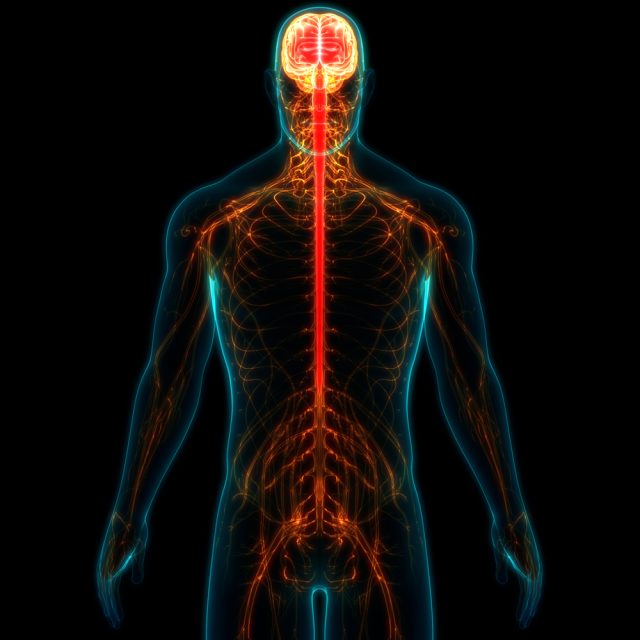 The human body energy field is an intricate system believed to be composed of various layers and centers that interact with the physical body.
The human body energy field is an intricate system believed to be composed of various layers and centers that interact with the physical body. 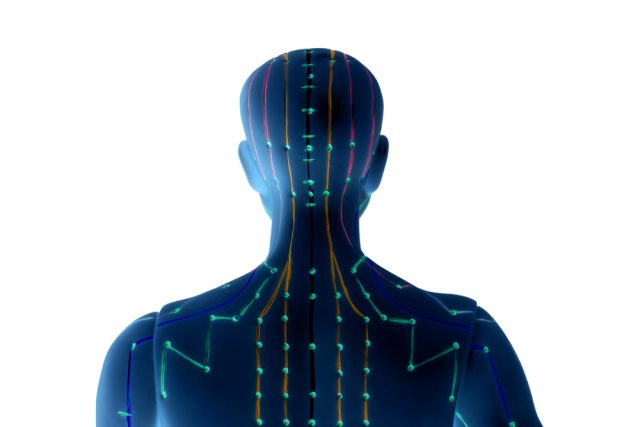 Physical injuries and unhealthy habits are significant contributors to the effects of energy blockages within the human energy field. These blockages can manifest as disruptions in the flow of energy, leading to imbalances that affect both physical and mental health. For instance, an injury may lead to compensatory movements that disrupt the natural flow of energy through the body’s meridians, while unhealthy habits such as poor diet or lack of exercise can lead to stagnation and accumulation of toxins.
Physical injuries and unhealthy habits are significant contributors to the effects of energy blockages within the human energy field. These blockages can manifest as disruptions in the flow of energy, leading to imbalances that affect both physical and mental health. For instance, an injury may lead to compensatory movements that disrupt the natural flow of energy through the body’s meridians, while unhealthy habits such as poor diet or lack of exercise can lead to stagnation and accumulation of toxins. The process of correcting energy blockages in the meridians and chakras is a nuanced practice that involves releasing excessive energy from overactive chakras. This is essential to restore balance within the human energy field. An overactive chakra can disrupt the harmonious flow of energy and lead to various physical and psychological issues.
The process of correcting energy blockages in the meridians and chakras is a nuanced practice that involves releasing excessive energy from overactive chakras. This is essential to restore balance within the human energy field. An overactive chakra can disrupt the harmonious flow of energy and lead to various physical and psychological issues. Anodea Judith’s seminal work,
Anodea Judith’s seminal work,  The full body energy assessment offers a comprehensive approach to understanding the energetic imbalances that may lead to health issues. Preventive measures can be tailored to individual needs, ensuring that potential blockages are addressed before manifesting as physical or psychological conditions. Therapeutic interventions, on the other hand, aim to restore balance and facilitate healing.
The full body energy assessment offers a comprehensive approach to understanding the energetic imbalances that may lead to health issues. Preventive measures can be tailored to individual needs, ensuring that potential blockages are addressed before manifesting as physical or psychological conditions. Therapeutic interventions, on the other hand, aim to restore balance and facilitate healing. The exploration of bio-energy within the field of bioenergetics extends beyond the confines of scientific inquiry, delving into the realm of cultural interpretations and traditional beliefs.
The exploration of bio-energy within the field of bioenergetics extends beyond the confines of scientific inquiry, delving into the realm of cultural interpretations and traditional beliefs. 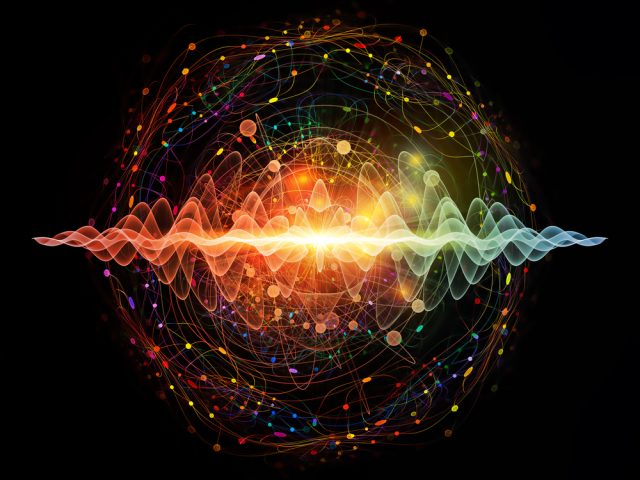 The cornerstone of bioenergetics in human physiology is the molecule adenosine triphosphate (ATP), which serves as the primary energy currency. ATP is synthesized and expended in a multitude of physiological processes, including muscular contraction, nerve impulse propagation, and biochemical synthesis. The following list highlights key areas where bioenergetics is integral to human physiology:
The cornerstone of bioenergetics in human physiology is the molecule adenosine triphosphate (ATP), which serves as the primary energy currency. ATP is synthesized and expended in a multitude of physiological processes, including muscular contraction, nerve impulse propagation, and biochemical synthesis. The following list highlights key areas where bioenergetics is integral to human physiology: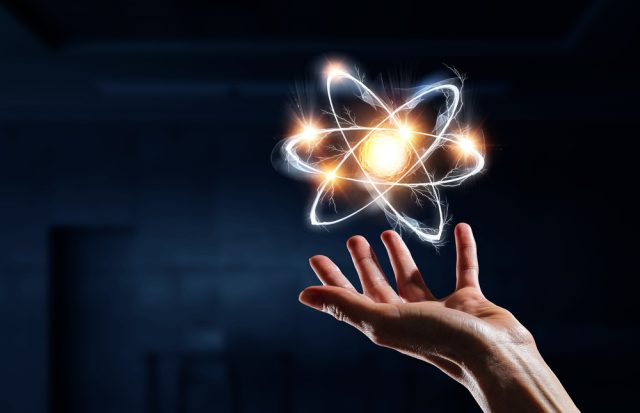 The energy currency of the cell, ATP (adenosine triphosphate), is a pivotal player in these metabolic transactions. ATP is synthesized through various biochemical pathways, including glycolysis, the tricarboxylic acid cycle, and oxidative phosphorylation, particularly within the mitochondria of eukaryotic cells. The flow of electrons through the electron transport chain is a critical step in the generation of ATP, providing the necessary free energy for the phosphorylation of ADP to ATP.
The energy currency of the cell, ATP (adenosine triphosphate), is a pivotal player in these metabolic transactions. ATP is synthesized through various biochemical pathways, including glycolysis, the tricarboxylic acid cycle, and oxidative phosphorylation, particularly within the mitochondria of eukaryotic cells. The flow of electrons through the electron transport chain is a critical step in the generation of ATP, providing the necessary free energy for the phosphorylation of ADP to ATP. In the interdisciplinary field of bioenergetics, the integration of macroscopic and microscopic perspectives is pivotal.
In the interdisciplinary field of bioenergetics, the integration of macroscopic and microscopic perspectives is pivotal.  The exploration of bioenergetics in the context of disease treatment and prevention has opened new avenues for understanding and managing various health conditions. Bioenergetics assume that each individual has a vital energy, essential for the control of physical and mental states. This concept has led to innovative therapeutic strategies, such as the
The exploration of bioenergetics in the context of disease treatment and prevention has opened new avenues for understanding and managing various health conditions. Bioenergetics assume that each individual has a vital energy, essential for the control of physical and mental states. This concept has led to innovative therapeutic strategies, such as the  Article Objective: Explore the concept of the body’s aura, the history of aura photography, and the interpretation of aura colors. Understand the human body’s aura energy field in this academic article.
Article Objective: Explore the concept of the body’s aura, the history of aura photography, and the interpretation of aura colors. Understand the human body’s aura energy field in this academic article.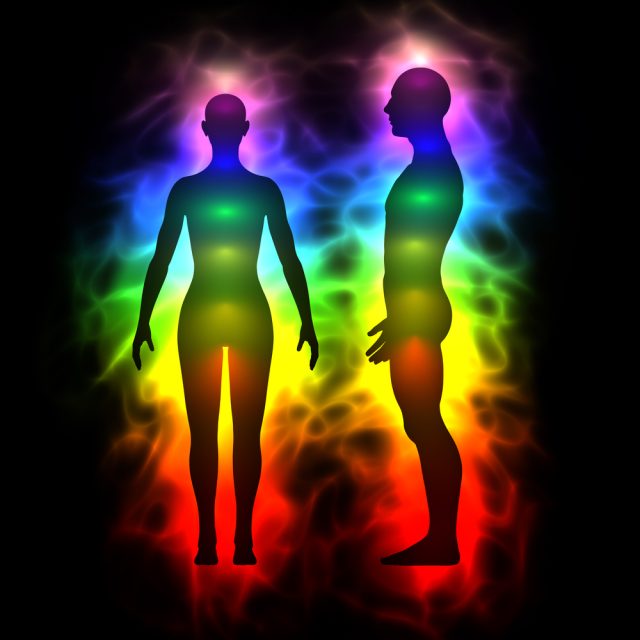 The aura is conceptualized as an energetic field that is said to envelop every living entity, including humans, animals, and plants. It is often depicted as a luminous halo or a light that radiates around the physical body. Although typically invisible to the naked eye, certain individuals claim to have the intuitive ability to perceive these auras, suggesting a sensitivity to subtle energy fields that transcend ordinary perception.
The aura is conceptualized as an energetic field that is said to envelop every living entity, including humans, animals, and plants. It is often depicted as a luminous halo or a light that radiates around the physical body. Although typically invisible to the naked eye, certain individuals claim to have the intuitive ability to perceive these auras, suggesting a sensitivity to subtle energy fields that transcend ordinary perception. The aura is an energetic field that envelops every living being, from plants to animals to humans. It is often described as a luminous halo or an aura of light that surrounds the physical body. While invisible to the naked eye, some individuals possess the ability to perceive auras intuitively. Aura photography has emerged as a powerful tool to bridge this gap, enabling people to visualize and explore their own aura. History and Evolution of Aura Photography, Aura photography has a fascinating history that dates back to the late 19th century. It was initially explored by
The aura is an energetic field that envelops every living being, from plants to animals to humans. It is often described as a luminous halo or an aura of light that surrounds the physical body. While invisible to the naked eye, some individuals possess the ability to perceive auras intuitively. Aura photography has emerged as a powerful tool to bridge this gap, enabling people to visualize and explore their own aura. History and Evolution of Aura Photography, Aura photography has a fascinating history that dates back to the late 19th century. It was initially explored by 

